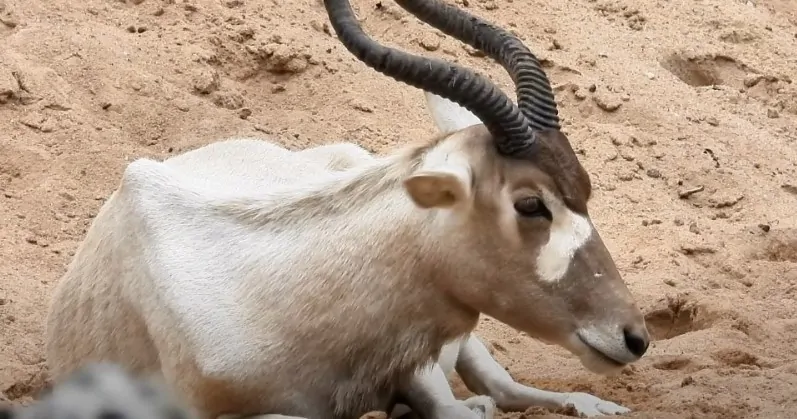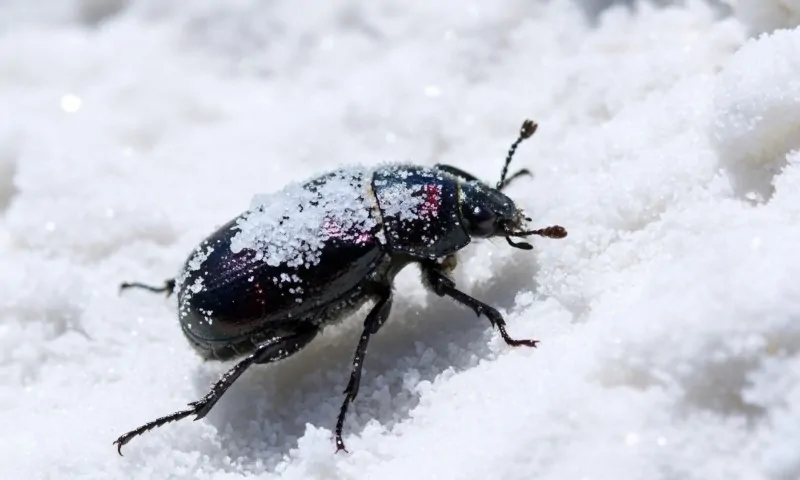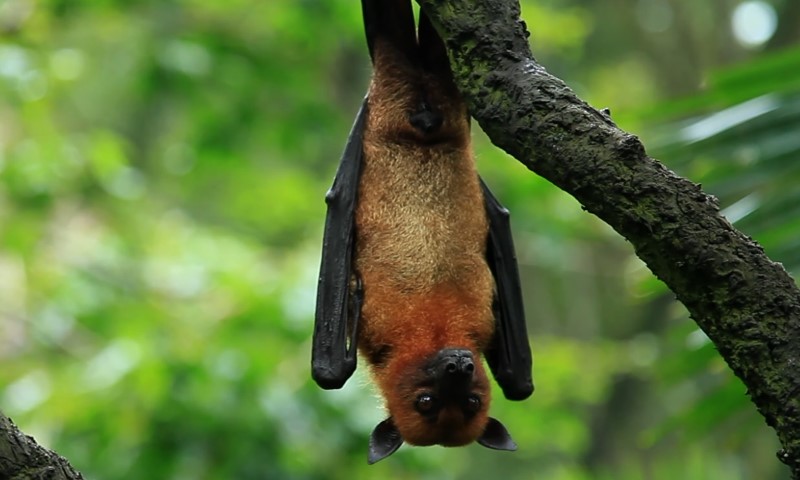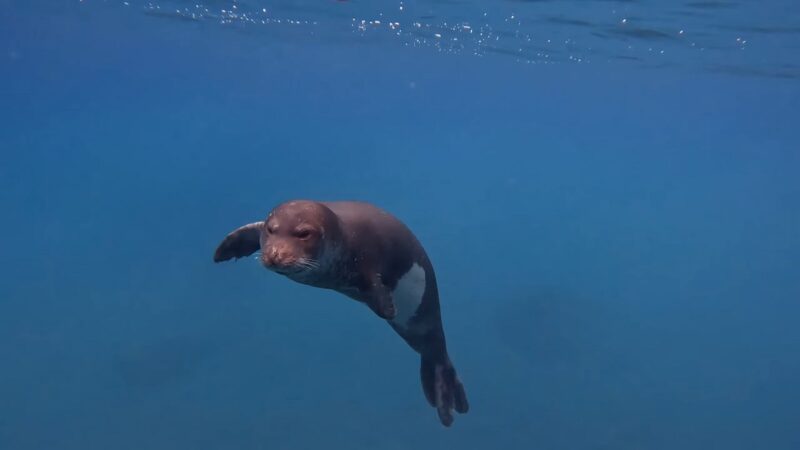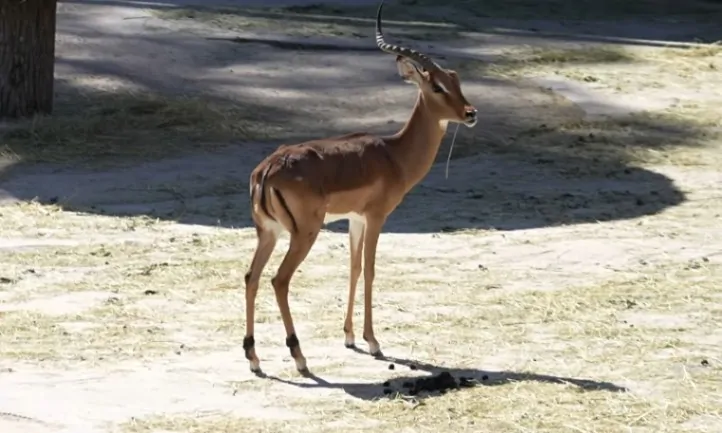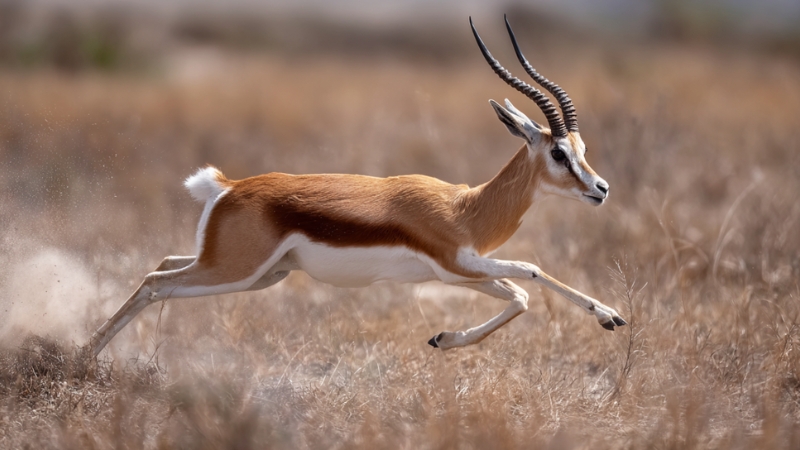If you were dropped in the middle of the Sahara with no water, 120-degree heat, and nothing but sand in every direction, you’d be dead in three days.
The addax antelope can live there for years. No gadgets. No help. No tricks. Just biology, built-in.
So, how does it do it? Let’s get into the nuts and bolts, real adaptations, real behaviors, real survival strategies.
Nothing vague. Every move the addax makes is calculated for one goal: to stay alive in a place that actively wants to kill you.
How the Addax Handles Extreme Heat
1. Coat Color That Changes With the Season
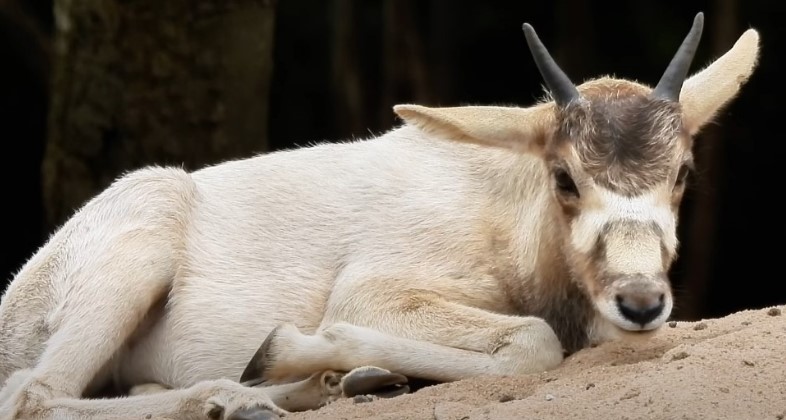
In summer, its coat becomes almost white, reflecting sunlight to keep internal temperatures down.
In winter, it darkens to absorb heat and stay warmer during desert nights, which can drop below freezing.
That’s not just cosmetic, it directly reduces how much the animal heats during the day.
2. Body Temperature Control (Heterothermy)
Instead of sweating or panting (which wastes water), the addax lets its body temperature rise during the day, up to 106°F (41°C). At night, it cools down again.
This prevents water loss from evaporative cooling.
Letting the body ride the heat curve avoids the need for constant cooling.
Zero-Water Lifestyle: How It Stays Hydrated Without Drinking
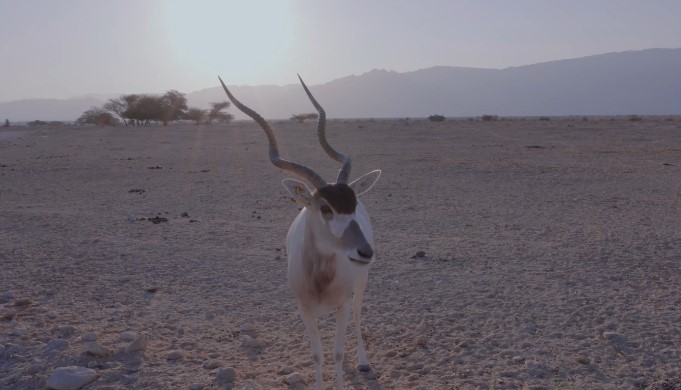
This is probably the most extreme thing about the addax: it can live for months without drinking free-standing water.
1. Metabolic Water from Plants
The addax eats grasses, herbs, and desert shrubs—especially ones with high moisture content.
Even when the plants look dry to us, they hold enough bound water to sustain them.
Examples of plants it eats:
| Plant | Water Content | Notes |
|---|---|---|
| Panicum turgidum (desert grass) | ~60–70% | Found in dunes, an excellent water source |
| Salsola spp. (saltbush) | ~50–65% | Common in saline soils |
| Tribulus terrestris (puncture vine) | ~40–60% | Hardy ground cover, available in dry months |
2. Highly Efficient Kidneys
The addax’s kidneys are specialized to concentrate urine, minimizing water loss. Its feces are dry pellets—another sign of extreme water retention.
Water loss breakdown:
-
Urine: Minimal
-
Sweat: Almost none
-
Feces: Very low moisture
Every physiological system is optimized to stretch water as far as possible.
Behavioral Adaptations: Living Smart, Not Hard
Survival in the Sahara isn’t just about physical toughness, it’s about timing, energy management, and making the right moves at the right time.
The addax has developed a behavioral playbook that stretches every calorie and every drop of water.
1. Nocturnal and Crepuscular Activity
The Sahara’s daytime temperatures can exceed 120°F (49°C), making mid-day activity not just risky—it’s lethal. So the addax avoids it entirely.
-
Active hours: 5 a.m. to 8 a.m., and again from around 5 p.m. to 9 p.m.
-
Main activities: Grazing, slow movement between foraging sites, social interaction.
-
Midday behavior: It lies down in a sheltered area—under sparse shrubs, behind sand ridges, or in shallow depressions, and it digs itself.
These self-dug depressions (sometimes 6–8 inches deep) are slightly cooler than the open surface.
The sand beneath retains nighttime cold, offering up to a 10°F (5–6°C) temperature difference.
If no shelter is available, the addax will simply stay motionless, minimizing exertion and reducing body temperature rise.
2. Minimal Movement: Energy Conservation Strategy
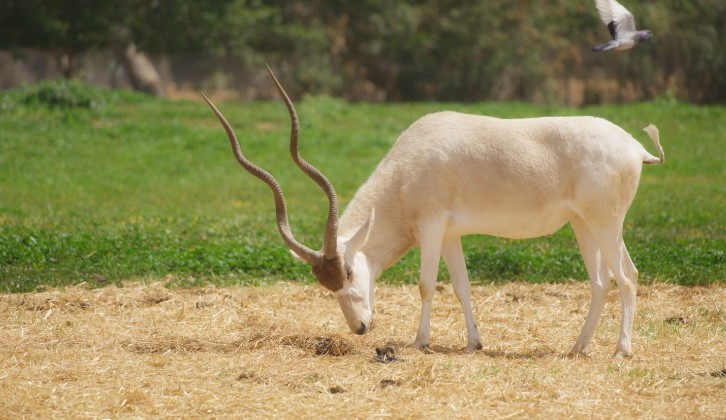
Unlike predators or more agile antelopes that rely on bursts of speed or large migrations, the addax is all about conserving energy.
-
Why it matters: Movement = heat + moisture loss + caloric burn. In the desert, every one of those is a cost.
-
Grazing strategy: Instead of browsing for miles, the addax targets high-efficiency patches, desert grasses, forbs, and ephemeral growth after rare rains.
-
Territorial range: Shrinks drastically during dry periods. Some addaxes won’t move more than 0.5 miles (0.8 km) in a day if food is present.
Its body is built for slow, deliberate walking. Long legs, stable gait, and muscle structure favor endurance over speed—perfect for low-output, long-term survival.
3. Use of Wind and Terrain: Microclimate Mastery
The desert isn’t uniformly hot. Certain spots—like shaded north-facing slopes, wind-exposed ridges, or shallow gullies are meaningfully cooler. The addax knows this and uses it constantly.
It aligns its body to face into the prevailing wind. This allows even mild breezes to cool the body through cutaneous convection, heat removal by air flow over the skin.
At night, moisture from the air condenses in low-lying terrain. Even a 2–3% bump in humidity makes a difference.
Addaxes will rest in these spots for slightly better cooling and moisture retention.
During rest, they’ll often face away from the sun, minimizing direct surface exposure.
This behavior is instinctual, not learned. Even captive antelopes display the same wind- and terrain-dependent habits, suggesting a deep evolutionary root.
Anatomy Built for the Desert
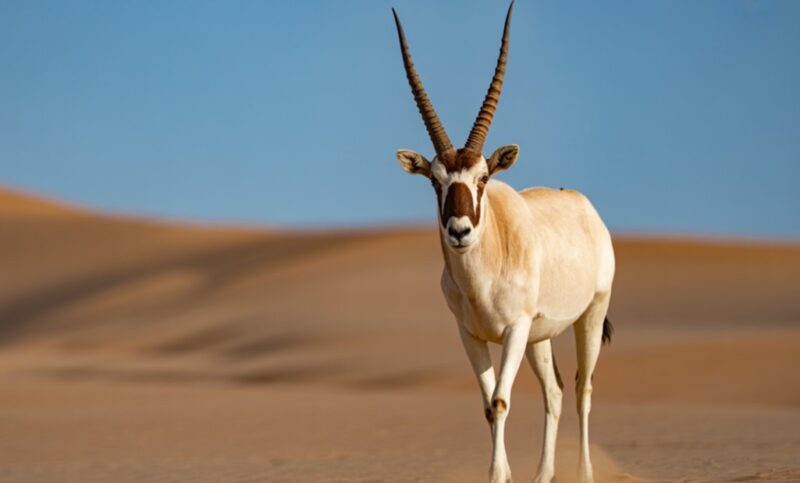
The addax isn’t just acting adapted—it’s physically engineered for sand, heat, and long-term dehydration.
1. Hooves Built for Sand Travel
Imagine trying to walk on a beach in high heels. You’d sink and struggle. The addax avoids that problem entirely.
-
Structure: Hooves are broad, flat, and splayed, with soft but durable pads on the bottom.
-
Function: Spreads the animal’s weight over a larger surface area, reducing pressure per square inch, allowing it to walk smoothly over dunes and soft sand.
-
Traction: Grooved surfaces and rubbery texture give grip on loose or shifting terrain.
This gives the addax a quiet, stable gait, especially useful during the cool night hours when it’s most active.
2. Nasal Turbinates: Natural Water Recycling System
Every breath you exhale carries water vapor. Most animals lose a significant amount of moisture this way. The addax has evolved a countermeasure.
Inside its nasal cavity are narrow, scroll-like bones covered in highly vascularized tissue. These increase surface area and help cool exhaled air.
-
How it works:
-
Inhaled air is warmed and humidified by the lungs.
-
On exhale, the cooled nasal turbinates condense water vapor out of the air before it leaves the body.
-
The condensed water is then reabsorbed into the mucous membranes.
-
This process reduces respiratory water loss by up to 70%—a massive advantage when every drop matters.
Bonus: The narrow nasal passage also filters dust, which is vital during sandstorms or windy days.
Addaxes can close their nostrils almost completely, like camels, to protect sensitive tissues.
Additional Physical Features Worth Mentioning
| Feature | Detail | Benefit |
|---|---|---|
| Thick eyelids and long lashes | Dual layers of protection over the eyes | Shields from blowing sand and UV radiation |
| Dark skin under the coat | Yes, even with pale hair | Absorbs body heat during cold desert nights |
| Low sweat gland density | Sparse glands | Reduces evaporative water loss |
| Large rumen (stomach chamber) | Up to 7 liters | Extracts maximum moisture and nutrients from dry, fibrous plants |
These aren’t subtle tweaks. They’re full-scale modifications, direct evolutionary responses to desert life.
Predator Avoidance Without Speed
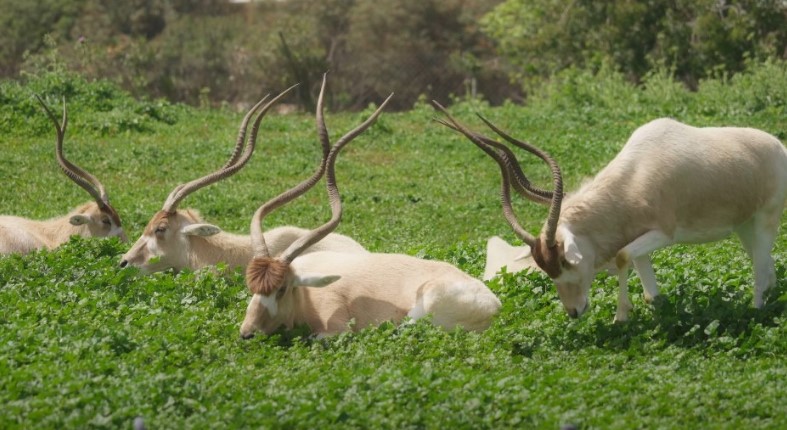
You’d expect a desert antelope to be fast. The addax isn’t. It tops out around 25 mph (40 km/h), which is slow by antelope standards.
So, how does it avoid predators?
-
Camouflage: Its pale coat blends perfectly with sand and desert scrub.
-
Low visibility behavior: It stays low, moves less, and avoids open spaces during daylight.
-
Group vigilance: Addaxes often stay in small groups of 3–10, with all members watching for threats.
That said, predators are less of a concern these days. The real threat? Humans and habitat loss.
The Addax Is Hanging On—Barely
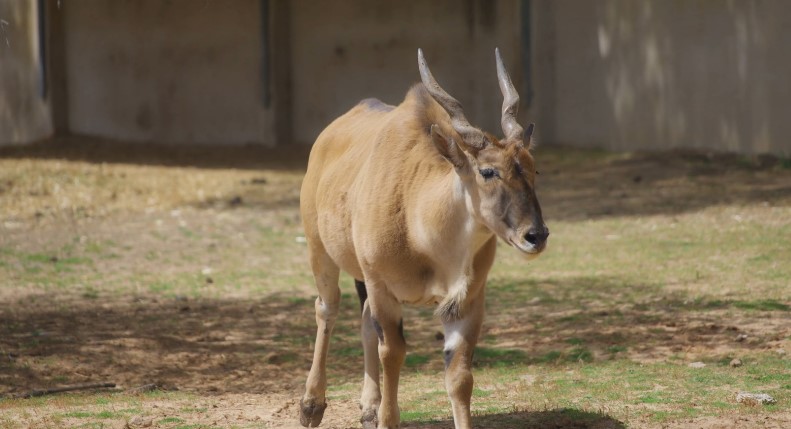
Let’s not sugarcoat it. The addax is critically endangered.
Population estimates:
-
Wild: Under 100 individuals, possibly as few as 30–50 in Niger.
-
Captive/Managed Reserves: Around 1,000–2,000 worldwide in zoos and breeding centers.
Main causes of decline:
-
Poaching: For horns and meat.
-
Military activity: Especially in parts of the Sahara where antelopes used to range.
-
Habitat degradation: Overgrazing by livestock and desertification.
Conservation programs are in place, including:
-
Breeding and reintroduction efforts in Chad and Tunisia.
-
Protected areas are managed in collaboration with local communities.
-
International bans on trade in addax products.
But time is running out. Without serious protection, we might lose the only large mammal fully adapted to life in the central Sahara.
Quick Reference
| Feature | Function | Result |
|---|---|---|
| Light seasonal coat | Reflects sun | Keeps cool in extreme heat |
| Variable body temp | Reduces sweating | Conserves water |
| Moisture from plants | No need to drink | Survives on dry vegetation |
| Nasal heat exchange | Saves water on exhale | Water retention |
| Broad hooves | Sand navigation | Moves easily in dunes |
| Nocturnal habits | Avoids peak heat | Lower water needs |
| Minimal movement | Conserves energy | Reduces caloric/water needs |
Final Thoughts
The addax isn’t flashy. It doesn’t leap or roar or pull at heartstrings with big glassy eyes. What it does is survive, with absolute precision, in a place that almost nothing else can handle.
That should be enough to earn it a spot in the spotlight. Not as a curiosity, but as a living example of how life bends, twists, and adapts under pressure.
And maybe, just maybe, if we keep paying attention and acting quickly, the addax won’t just be a desert relic from the past, but part of its future too.
Related Posts:
- Wildlife That Survives in the Rub' al Khali Desert
- Top 12 Amazing Desert Landscapes In The World
- 10 Biggest Spiders In The World You Need To Know About
- 10 Oldest Trees in the World You Must Know About in 2025
- What Makes Welwitschia One of the World’s Most…
- Life in the Namib Desert - Africa's Oldest Desert…

